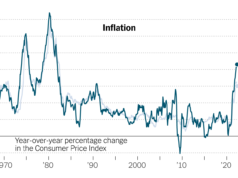In the cut-throat world of retail, visual advertising plays a crucial role in attracting customers and driving sales. Creating eye-catching and compelling visuals has made a significant difference in the success of retailers since the popularization of pamphlets then and social media ads now.
Whether in-store displays, signage, or online promotions, nailing it may be the push you need to grow your enterprise.
The following are useful tips to do just that for your retail store.
1. Leverage Storytelling
Visual advertising is an excellent medium for storytelling. Craft narratives around your products or brand that captivate and resonate with your audience. Shoppers make almost immediate judgments on whether to inspect an item more thoroughly or move on with them.
Hence, weaving a narrative that begins with an enticing story is vital. Once their curiosity is piqued, illustrate the benefits they get from purchasing.
Moreover, flex your creative muscles and think about methods to engage more than just your customers’ sense of sight. Integrate visuals that enable customers to connect their daily experiences with your products.
For instance, if you’re running a hunting depot and want to showcase weapons, using a smartly made AR 15 wall mount can make a good impression on people who walk into your shop. You could depict it in a household setting as a great addition to a long-time tradition. Imagery like this can stir an emotional bond with the shopper, increasing their likelihood of buying.
Storytelling can make your visuals memorable, fostering brand loyalty and encouraging word-of-mouth referrals.
However, it’s crucial to regularly evaluate your messaging to ascertain your advertising practices’ effectiveness and identify areas for improvement. This continuous assessment allows you to adapt and evolve your strategies for sustained growth.
2. Understand Your Target Audience
Before diving into visual advertising, it’s essential to have a clear understanding of your target audience.
Designing successful visual advertising isn’t solely about crafting a captivating brand and constructing appealing displays. Customers’ needs should also guide their presentation. Ensure you promote your customers’ desired products, not merely what they require.
Remember that customers mostly visit a store to acquire items they consider essential. Therefore, advertising these to them isn’t necessary. Instead, use this chance to attract shoppers to other products that may have escaped their notice.
Are your customers searching for outstanding value through economical prices, or are you striving to keep pace with the most recent style trends? All these considerations should inform your advertising tactics when devising the visual presentation of your store.
You must know your customers’ demographics, preferences, and shopping habits for the best results. Only then can you create visuals that resonate with them. Conduct market research, analyze customer data, and engage with your audience to gain valuable insights. This knowledge will be the foundation for crafting visuals that appeal to them.
3. Develop A Unique Brand Identity
Your brand identity is the essence of your retail store. It should reflect that in all your visual advertising efforts.
Define your brand’s personality, values, and unique selling propositions. This will help you create visuals that align with your brand style and establish a consistent and recognizable image in the minds of your customers.
Additionally, consistency across all advertising channels will reinforce your brand identity and build consumer trust. It helps customers identify you quickly, building brand recognition and loyalty.
Your visuals should consistently use logos, fonts, colors, and overall design elements. This way, customers can pick you out from the crowd, even at a glance.
Synchronize your in-store advertising with your online presence. Remember, consistent branding across all platforms gives the impression of a cohesive, professional brand. Moreover, it makes it easier for customers to identify your products, both in physical and digital spaces.
4. Create Compelling Window Displays
The window display is similar to a handshake; it’s your first chance to make an impression and pique the interest of those walking by.
This crucial marketing tool should perfectly blend creativity and brand alignment, offering a glimpse into your store’s unique identity. Just as a beautiful book cover entices readers to delve into the story, an engaging window display should allure potential customers.
Stay attuned to the calendar when designing your display. Utilize the rhythm of the seasons, current fashion trends, or imminent holidays to craft a visually arresting showcase that resonates with passersby. Experiment with distinctive props, strategic lighting, and harmonious color palettes to make your displays pop and differentiate your storefront from others.
Moreover, don’t let your window displays stagnate. Regular rotations and updates keep your store’s exterior looking fresh and inviting. This also signals to potential customers that there’s always something new and exciting to explore. Consider bulk stickers for business use to save money and effort while maintaining a seamless brand promotion strategy.
By constantly evolving your window displays, you sustain intrigue and keep the anticipation alive, urging potential shoppers to step inside and embark on a memorable shopping experience.
5. Consider Color And Lighting
Colors have a powerful impact on human emotions and behavior.
Utilize color psychology to evoke specific emotions in your visual advertising. Different hues can convey diverse messages. For example, red can stimulate urgency and excitement, while blue brings trust and calmness.
On the other hand, great lighting with the correct hues can guide shoppers’ attention to targeted areas. Bright hues contrasting a soft backdrop can attract individuals intrigued by the setup. It assists customers in perceiving your products more clearly and emphasizing any gleaming aspects. Furthermore, it can create a range of atmospheres depending on its application.
The right lighting can aid in establishing your store’s atmosphere. Gentle lighting gives a cozy and welcoming feel, while intense lighting instills a lively contemporary aura.
6. Invest In High-Quality Graphics And Photos
These also play a crucial role in visual advertising. They’re the first thing a customer sees, and they help form the initial impression of your brand.
Invest in professional photography for your products. Good lighting, composition, and image clarity can make a difference in showcasing your items’ best features.
Avoid generic stock photos as much as possible. Customers can usually spot them, and they may make your brand appear inauthentic. If you can’t produce original images, opt for high-quality stock photos that haven’t been widely used.
7. Review Your Selling Point
Visual advertising is more than just a one-and-done activity; you must continually evaluate your stores to discern where your advertising hits the mark or falls short.
The layout of your physical and online platforms and displays is an inventive process. However, analytics should inform it and continually refine it to maintain its efficacy. Besides, customer fatigue can happen if people always see the same displays when visiting your store.
Regularly experimenting with fresh ideas facilitates valuable data collection and keeps the shopping experience exciting for customers.
Visual advertising combines marketing, sales, design, and operations to curate an engaging customer journey. Harnessing it to its best can be a game-changer for small businesses.
Know What Works
Nailing visual advertising for your retail store entails much more than eye-catching displays. It’s a carefully crafted blend of imagery, branding consistency, narrative storytelling, smart design, high-quality graphics, and constant evaluation. By keeping customer preferences at the forefront and making data-driven decisions, you can significantly enhance the impact of your visual advertising.














